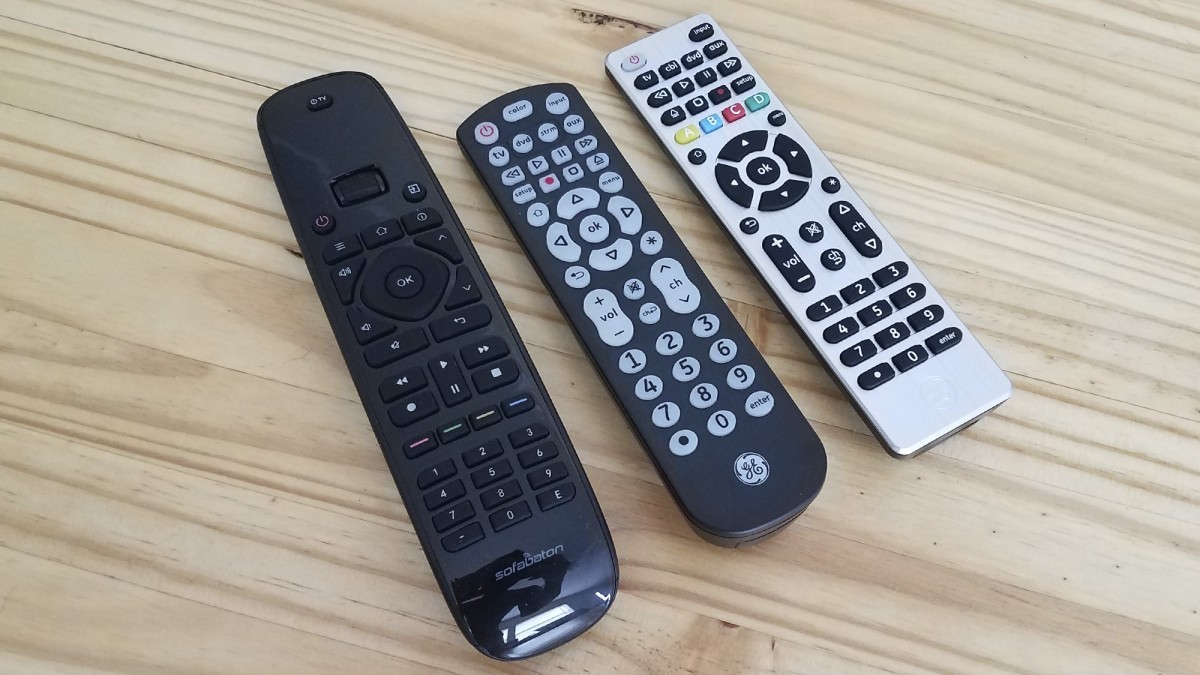The One Controller: Mastering Universal Remote Control

Table of Contents
Choosing the Right Universal Remote Control
Finding the best universal remote control for your needs depends on understanding the different types available and identifying the key features that will best suit your lifestyle and tech setup.
Understanding Different Types:
The market offers a variety of universal remotes, each with its own programming method and capabilities:
- Learning remotes: These remotes learn codes directly from your existing remotes. You point your old remote at the new one, press a button, and the new remote copies the signal. This is a simple method, but it might not work with all devices.
- Direct-entry remotes: These require you to manually enter device codes, often found in the remote's manual or online databases. This method offers more precision but requires more effort during setup.
- Smart remotes: These Wi-Fi enabled remotes often connect to an app on your smartphone or tablet, providing advanced features like voice control, app-based programming, and integration with smart home systems. They are usually the most expensive but offer maximum flexibility.
When choosing, consider:
- Number of devices supported: How many devices do you need to control? Choose a remote with enough buttons and memory slots.
- Features: Look for features like macro programming (creating custom button sequences), activity-based control (one button to start your movie night), and voice control.
- Ease of use: Some remotes have more intuitive interfaces than others. Read reviews and consider your own tech proficiency.
Key Features to Look For:
To maximize your universal remote experience, prioritize these features:
- Backlit buttons: Essential for use in dimly lit rooms.
- Macro programming: Create custom sequences, such as "Watch Movie," which turns on your TV, sound system, and cable box with a single press.
- Activity-based control: Simplify your entertainment with pre-programmed activities that control multiple devices simultaneously.
- Voice control: Use voice commands for hands-free operation (a feature increasingly common in smart remotes).
- Compatibility: Before purchasing, always check the manufacturer's compatibility list to ensure your devices are supported.
Setting Up Your Universal Remote Control
Successfully setting up your universal remote is key to enjoying its benefits. This section guides you through the process.
Programming Your Remote:
The programming process differs depending on whether you've chosen a learning or direct-entry remote:
- Learning remotes: Aim your old remote at the new remote, following the instructions in your new remote's manual. Typically, you hold down a button on the new remote and then press the corresponding button on the old remote. Repeat this for each function you need to program.
- Direct-entry remotes: Find your device's code in the remote's manual or an online database. Enter the code using the remote's keypad. Test each function to ensure proper operation.
Troubleshooting common programming issues:
- Code not found: Double-check your device model number and search online databases for alternative codes.
- Remote not responding: Check the batteries, ensure the device is powered on, and reprogram the remote.
Configuring Device Codes:
Device codes are unique identifiers that tell the universal remote how to communicate with your specific devices.
- Finding device codes: Check the manufacturer's website, online databases (many are freely accessible), or consult your remote's manual.
Using Activity-Based Control (if applicable):
Activity-based control simplifies things.
- Setting up Activities: Create activities such as "Watch TV," "Listen to Music," or "Game Night." Each activity will activate the necessary devices in the right order.
- Linking devices: Assign each device to the appropriate activity. For example, "Watch TV" might include your TV, cable box, and sound system.
Troubleshooting Common Universal Remote Problems
Even the best universal remote control might encounter issues. Here's how to troubleshoot common problems:
Remote Not Responding:
- Check the batteries: Weak batteries are the most frequent cause of remote malfunction.
- Reprogram the remote: Sometimes, a simple reprogramming solves responsiveness issues.
- Check device power: Ensure your devices are turned on and correctly connected.
Incorrect Codes:
- Double-check device codes: Ensure you entered the correct code for your specific device model.
- Try alternative codes: Many devices have multiple codes.
- Search for updated code lists: Manufacturers sometimes update code lists; check online for the latest versions.
Limited Functionality:
- Verify compatibility: Check the compatibility list to ensure your remote supports all of your devices.
- Check for firmware updates: Outdated firmware can cause functionality issues.
- Consult the user manual: The manual provides detailed troubleshooting guidance.
Specific Device Issues:
You may encounter issues with specific functions, such as TV volume or cable box channel changes. Carefully consult your universal remote manual and your device manuals for instructions.
Advanced Universal Remote Features
Explore these advanced features to optimize your home entertainment system.
Macro Programming:
Create highly customized sequences of commands for complex tasks. For example, you can create a macro that simultaneously turns on your TV, sound system, and streaming device and sets them to the correct input source.
IP Control & Smart Home Integration:
Many modern universal remotes offer IP control, allowing you to control devices over your home network. This frequently integrates with smart home platforms like Alexa or Google Home.
Apps & Software Updates:
Regularly check for software updates to your universal remote's app (if applicable) and firmware to ensure you are benefiting from the latest features and bug fixes.
Conclusion:
Mastering your universal remote control can significantly enhance your home entertainment experience. By understanding the different types, setup processes, and troubleshooting techniques, you can streamline your home theater and say goodbye to remote control clutter. Choosing the right universal remote, understanding its features, and knowing how to troubleshoot common problems will give you the ultimate control over your home entertainment system. Start simplifying your life today with the power of a single, expertly configured universal remote control!

Featured Posts
-
 Tam Krwz Awr An Ky Nyy Grl Frynd Hqyqt Ya Afwah
May 12, 2025
Tam Krwz Awr An Ky Nyy Grl Frynd Hqyqt Ya Afwah
May 12, 2025 -
 Le Clash Chantal Ladesou Ines Reg Retour Sur La Polemique
May 12, 2025
Le Clash Chantal Ladesou Ines Reg Retour Sur La Polemique
May 12, 2025 -
 Princess Beatrice On Her Parents Divorce A Candid Reflection
May 12, 2025
Princess Beatrice On Her Parents Divorce A Candid Reflection
May 12, 2025 -
 Ny Knicks Vs Cavaliers Game Time Tv Channel And Free Live Streaming Options
May 12, 2025
Ny Knicks Vs Cavaliers Game Time Tv Channel And Free Live Streaming Options
May 12, 2025 -
 Usmnt Weekend Roundup Hajis Hat Trick Leads The Way
May 12, 2025
Usmnt Weekend Roundup Hajis Hat Trick Leads The Way
May 12, 2025
